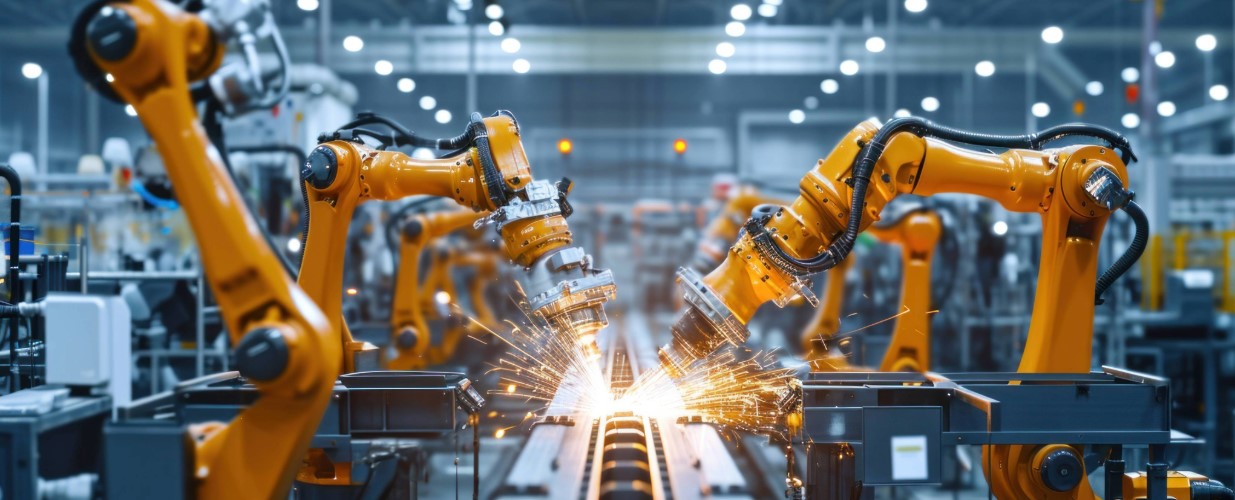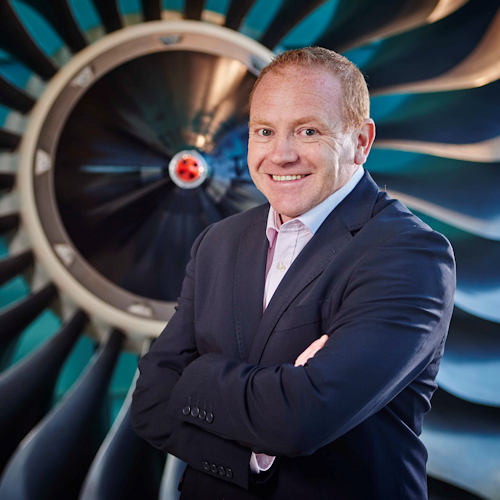Change your business address
If you're a full access user, you can update your business, registered, mailing and personal addresses within Online for Business and the Business banking app.
Dave Atkinson, UK Head of Manufacturing SME & Mid Corporates, sits down with colleague Tim Biddle, Head of Asset Finance and Prof Mike Wilson, Chief Automation Officer at the Manufacturing Technology Centre (MTC), to discuss automation investment in the sector.
Read time: 5 mins Added: 04/08/25

Dave Atkinson: “Although the UK manufacturing sector has previously been recognised as a global powerhouse, many say the pace has slowed due to underinvestment. What do manufacturers tell you is deterring them from investing in automation and robotics in 2025?”
Mike Wilson: “There is a longstanding perception that Automation and Robotics (A&R) is expensive, difficult and requires highly specialised skills to deliver within a business. Small businesses are understandably cautious when investing in new technology, especially when additional cost is involved. The other consideration is how it will directly impact productivity and output, which is often difficult to measure before implementing.”
“Uncertainty around things like tariffs and – until recently – the lack of a clear, long-term Industrial Strategy haven’t helped either.”
Tim Biddle: “When we look to other developed economies around the world, we see a more long-term mentality where it’s not unusual for manufacturers to have investment cycles with return assumptions that can be up to 10 years long. In the UK, there is a much shorter return expectation, which can prevent firms from deciding to invest in A&R. There can also be a perception of A&R as being ‘nice to have’ rather than being critical for long-term competitiveness.”
Dave: “What would you say to manufacturers to help overcome these concerns?”
Mike: “Manufacturers would benefit from being more competitive and productive, both of which can be achieved through A&R adoption. These systems are often not as expensive as they are perceived, and training is widely available to help upskill employees. It also looks like we are getting some longer-term stability through the new Industrial Strategy and the agreement of international trade deals.”
Tim: “A&R is key to long-term competitiveness. The work being done by the likes of MTC is helping bring the technology to the fore and make it more accessible, but it’s also down to Lloyds and other lenders to normalise funding for A&R. There’s an argument that historically our sector perhaps hasn’t understood A&R as well as it should, and now we have to make sure manufacturers know that we support these kinds of investments, and not just for larger businesses, but for small and medium-sized businesses as well.”
Dave: “What kinds of A&R solutions are available for UK manufacturers and what applications do they have? What about financing?”
Mike: “There’s a full range of robot solutions that are available, many of which have a proven track record of delivering improved productivity. Solutions like machine tending, welding and palletising would be good starting points for many manufacturers who have not implemented a robot solution before.”
Tim: “From a financing perspective, traditional banks like Lloyds are happy to fund investment in A&R with relatively standard Asset Financing products like Hire Purchase. But, while there are some very straightforward A&R applications, like autonomous forklift trucks, procurement can also sometimes be complex.”
“It might involve a systems integrator going to a panel of suppliers and piecing together a bespoke solution, and a lot of A&R manufacturers are overseas, which can present some challenges in funding that upfront cost. There are options to secure initial loans that then translate into a traditional Hire Purchase product once the solution is put together and is functioning.”
Dave: “What is the first step for manufacturers who are exploring the automation opportunity?”
Mike: “The first step is getting the necessary help and support to select the most appropriate application.”
Tim: “After identifying this, the next step is to approach a lender like Lloyds and challenge them to provide a financing solution that suits your plans, which might be a fairly generic product or a more tailored package.”
“We are also working with the A&R supply chain to develop a proposition to make their products more attractive and accessible. That means partnering with the manufacturers, distributors and systems integrators to provide funding alongside their technologies. It’s another way we can help manufacturers connect the dots and find the financing solution for them, so watch this space!”
Dave: “How can manufacturers minimise the risk that comes with investing in automation?”
Mike: “Independent support is available from organisations including MTC, the High Value Manufacturing Catapult and others to help guide you through the procurement journey. That can include developing the business case, writing a requirements specification and selecting the most appropriate supplier.”
Tim: “Where manufacturers face a cash flow challenge, we can help, whether that's with an Invoice Financing solution, a trade finance facility or Asset Finance, that enables them to take on more business and grow more quickly. We can help them understand exactly what that means in terms of monthly payments to support their budgeting and planning and make it easier for businesses to say yes to investing.”
Dave: “UK manufacturers already have a skills shortage. Could automation actually attract more people to work in manufacturing?”
Mike: “Absolutely. A&R helps address skills shortages in two ways. Firstly, robots can undertake mundane, repetitive tasks, like welding, and be tended by unskilled personnel. Skilled personnel like welders can then apply themselves to more complex tasks, creating more interesting, satisfying jobs where their skills can add real value. Secondly, it’s creating interesting, stimulating jobs that are far more appealing to tech-savvy young people.”
Tim: “I agree that A&R is a route to creating higher skilled, higher paid jobs that that can encourage more diversity in manufacturing and ultimately help build businesses that are more competitive in the long-term.”
Dave: “What is the ultimate prize at the end of the automation journey?”
Mike: “Manufacturers that can effectively integrate A&R into their processes will find that they can achieve improved productivity and competitiveness leading to growth and greater profits, with happier colleagues working in more highly skilled and better paid jobs.”
Tim: “We're seeing an opportunity to boost UK competitiveness by raising levels of investment in this kind of cutting-edge technology. Investing in A&R is a huge opportunity to bolster the long-term resilience and strength of UK manufacturers and the UK economy.”
